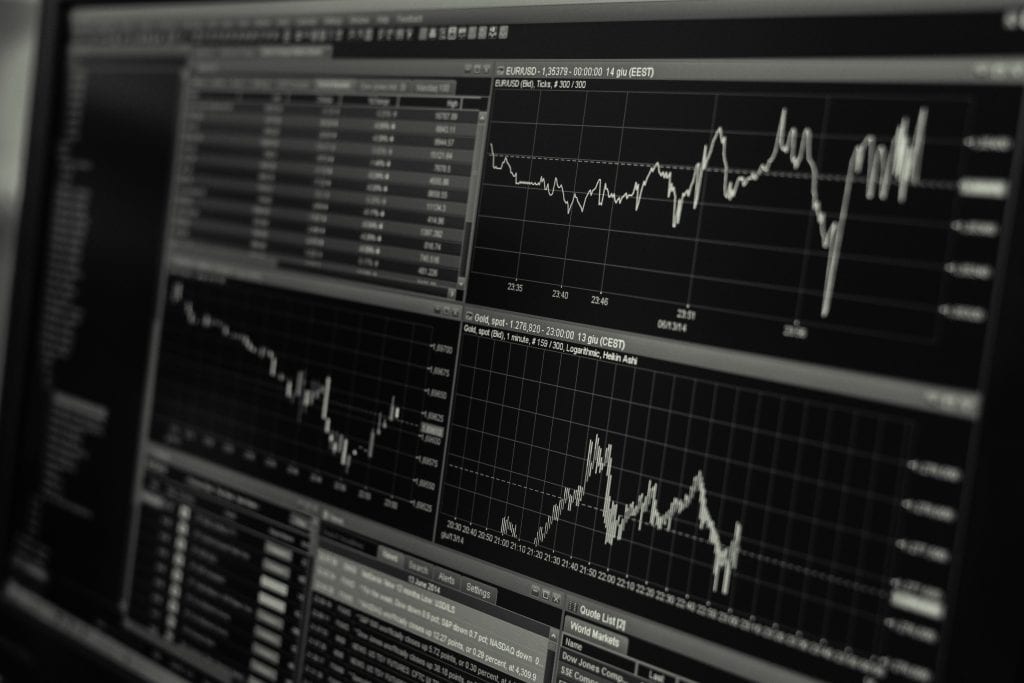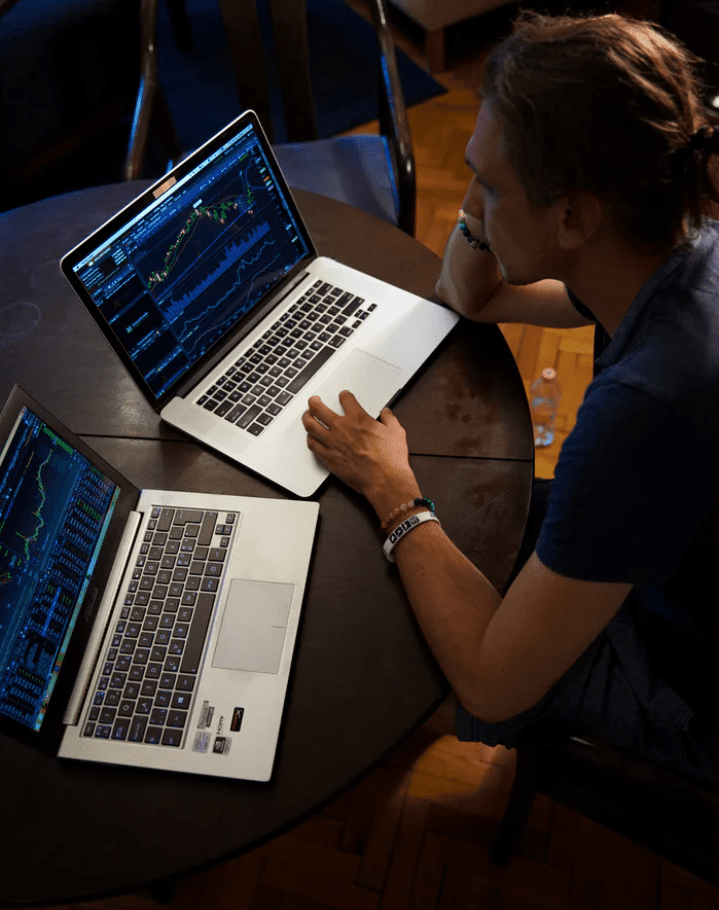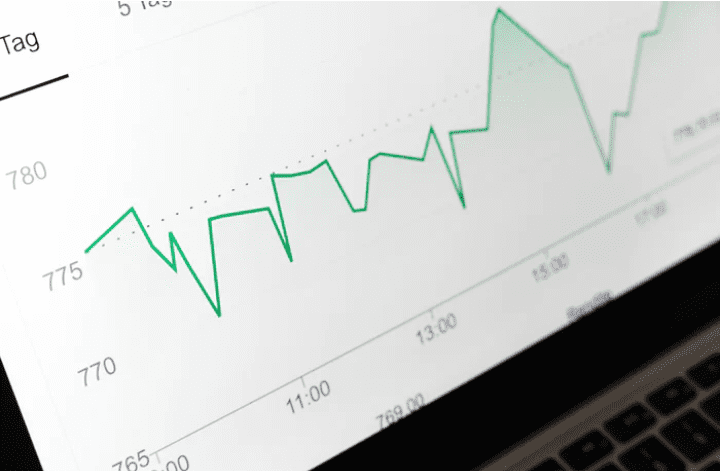Trading and investing in indexes is considered a passive style of investing.
Strategic methods of Index Trading
How to Identify What Moves an Index’s Price
Introduction
Index trading is one of those trading that give investors a lot of choices. Reason being that diversifying of portfolios is as easy as trading in the market place.
In the financial trading markets, you will find a lot of various options for traders. Indexes are some of those that are commonly traded in the financial market. When trading, traders often have the option of buying an underlying stock index. The investor might hold on to this indices for a particular period of time.

In the course of this work, index and indices will be used interchangeably depending on the context they appear.
What is Index Trading
Index trading is the process of trading a group of stocks which is known to make up an index. An Index is measuring the value of a section of the stock market place. It is known to be computed from the prices of selected stocks. This might also be referred to as a group of stock market listed uppermost businesses within an area. It is quite different from other trading like commodity trading where a trader will invest in a commodity or even Forex trading where one will invest in a currency.
Basically an index is a figure that always reflect the health of any market or an economy. So when you are investing in an index you are essentially investing in a fund that will mirror the movement of the index. What index trading will enable you to do is to be able to invest in a very large segment of a market, or even the whole market itself. Read more, here
Guides to Index Trading

It is a way to gain exposure to global or regional markets without having to analyse the performance of individual companies. Popular stock market index usually provide traders with a high degree of liquidity, long trading hours and tight spreads.
Why is it important to traders?
A market index is a measurement of a compilation of shares. This tracks and assesses the performance of a particular market’s sector, region or country’s economy in general.
There is need to understand that the majority of highly developed, together with developing economies, often have at least one financial index. For instance, the S&P 500 index will include the stocks of more than 500 top-traded companies in the U.S. This is comprising 70% of the entire financial value of the United States’ stock market. The index delivers a good view on the state of the American stock market as a whole.
To understand the importance of index trading to traders, read more on stock market.
Why index trade?
Trading indices is a relatively secure form of trading with integrated money management. The risks involved in index trading are always lower than the risks of investing in individual stocks.
- Indices are the least manipulative financial instruments. The price of an index changes according to the price fluctuations of the constituent companies that make up that index.
- Embedded money management scheme. You simply don’t put all your eggs into one basket in index trading. With the NASDAQ I 00 index, you diversify into the most-prominent American high-tech companies. To choose CAC 40, you will contribute more to petrochemical industries.
- Lower risks. Though indices can also be volatile due to factors like geopolitical events. Economic forecasts and natural disasters, an index losing or gaining 10% is already a huge historical event that will often hit the news.
- No risk of bankruptcy. Unlike an individual company, an index can’t go bankrupt. When a DAX 30 constituent often go bankrupt, it is will be replaced by the 31st company in the list of leading companies in Germany. However, if you hold shares in this business, you’ll automatically lose your investment. This means it is important before you invest, there is need for a thorough research and analysis.
- Benefit from the global economic situation. By investing in a basket of companies, you benefit from the positive or negative dynamics of the global economy. When one company fails, the index might still rise. Insight on stock market
How to trade index with CFD
CFD means Contract For Difference (CFD). It is a kind of contract between a trader and a broker, in order to try and make profit from the difference in price, between opening and closing the trade.
Usually, popular stock market indices will provide traders with a high degree of liquidity, long trading hours and even tight spreads. One of the easiest and most popular ways to trade indices is with CFD. Making use of CFDs to trade indices will give you the opportunity to go long or short the market without even having to deal with any conventional exchanges.
You trade directly with your CFD broker. It doesn’t matter whether you have a clear view of positive or negative of the index forecast and predictions. You might try to make profit from either the upward or downward future price movements. This will be made up of a cross-section of liquid trading instruments. Indices are extremely known by the CFD traders around the world.
How are major indices calculated?
Before we stepped into the digital era, indices were calculated as simple averages. The prices of all the constituents will be summed up and be divided by the total number of companies. Today this approach might seem too simple, but it still met the requirements of its time. This will provide a more reliable view on the strength of a specific market.
Today indices’ values still change according to the fluctuations in the value of its underlying individual stocks. However, indices use the two major formulas to determine their price:
- Market-value-weighted indices. Also known as capitalisation-weighted. Indices are calculated based on the total market value (capitalisation) of its constituents. It means that the bigger companies have a larger impact on the index. Good examples of market-weighted indices are those of FTSE 100 and DAX 30.
- Price-weighted indices. They are calculated based on the share price of its constituents. It means that companies with much higher share prices have a more stronger impact on the entire index price. An example of a price-weighted index is the Dow Jones Industrial Average. Read more on this, here.
Strategies of Index Trading

Day Trading
Day trading is a type of trading that’s to do with the method of buying and selling indices within the same day. The major principle of day trading is to be able to close all open positions before the market close for that day. The advantage? In order to avoid any added costs or risks that’s often associated with holding the position overnight.
With day trading, your goal is to spawn quick, yet modest profits from even the smallest price movements. But take notice; this rule will make day trading suitable for traders who have the time and energy to pay close attention to the markets.
Unsurprisingly, the major disadvantage with day trading is that is extremely time-consuming. Traders need to be monitoring the markets and be prepared to make quick decisions when a price moves in a particular direction. Read more on day trading broker.
Position Trading
Generally, position trading is a kind of trading that involves the buying and holding of an index for a longer period of time. This can be for many days, weeks, or even longer. As a result, position traders are widely known to be less concerned with short-term market fluctuations. The trades of position traders are far fewer than day traders, with each trade carrying a great potential for your profit. However, holding a position for a long time might also increase the inherent risk.
Trend Trading
Similar with the day trading, trend traders will attempt to make profit from short to medium-term market trends that will influence the index. Here, traders only need to take a bullish position, this depends on a wider and entire market sentiment. When trading the trend, keep your position open as long as the trend continues. Apply stop losses and guaranteed stops to protect profits or reduce losses in the event the trend reverses.
Technical Indicators
Technical indication will involve one reviewing charts and making decisions that will be strictly based on patterns and indicators. These patterns are particular shapes that will look like candlesticks form on a chart, and may give you information about where the price will likely go next.
- Trend indicators will show you which the direction the market is occupying. They’re basically referred to as oscillators, as a result, they do have an inclination to maneuver between high and low values of a wave.
- Momentum indicators will show you how robust the trend is and might additionally inform you when a possible short reversal will occur. Warning momentum is suggesting that the market is turning into exhausted and will flow for a retracement or even reversal. Associate fast momentum condition will suggest that the trend is powerful and it’s certain to continue.
- Volume indicators will show you the number of mercantilism during a sure index and even its modification over time. This is often helpful as a result of the worth changes, volume levels will start to offer a sign of how robust future move will also be.
- Volatility indicators will show you the how abundant the worth is dynamical over a given period of time. As we all have a tendency to apprehend, volatility might be a basic thing about the market, and while not it, there will be no profits. The upper the volatility, the more speedy the index’s worth will be dynamical, meaning additional chance to capitalise. However remember- volatility will tell you nothing regarding the future direction, just simply the vary of costs.
Breakout Strategy
Breakout strategy is a strategy used by active index investors to get an edge at intervals with a trend’s early stages. Usually speaking, this strategy is the place to begin for major worth moves. As well as expansions in volatility, and once managed properly, offers restricted draw back risk.
A breakout actually means a price that will move outside a well defined support or resistance level with an increased volume. A support level is where a shared price has been shown a tendency to bounce back after falling. And the resistance level is the point where the price has shown a tendency to rebound towards the down-side after the price has risen too.
How to Identify What Moves an Index’s Price
Price changes typically result from economic or geopolitical news. So staying on top of current events can help you better understand why a price has moved, and even to anticipate the short-term trend. This will allow you to make more informed decisions when buying or selling an index.
The price of index be affected by a range of factors, including:

- Economic news – capitalist sentiment, financial organisation announcements, payroll reports or different economic events will have an effect on underlying volatility. Which might cause associate degree index’s worth to maneuver.
- Company monetary results – individual company profits and losses can cause share costs to extend or decrease, which might affect an index’s worth.
- Company announcements – changes in company leadership or doable mergers would possibly seemingly have an effect on share costs. Which might have either a positive or negative impact on associate degree index’s worth.
- Changes to associate degree index’s composition – weighted indices will see their costs shift once firms ar side or removed. As traders modify their positions to account for the new composition.
- Commodity costs – varied commodities can have an effect on totally different indices’ costs. This implies any fluctuations within the artefact market might have an effect on the index’s worth.
Index Trading Psychology
Traders who usually have started out in the financial markets trading indices on a buy and hold basis. For many, the ultimate ambition is to tighten the timeframe by successfully day trading indices where there is a deep pool of liquidity. However, the step from buying and holding stocks to day trading indices is a substantial step. Both in terms of the new skills and methods needed to consistently earn money and the discipline required to manage the risk.

The market is like a loud, brilliantly lit dance palace. The “buzz” will get you targeted with exciting potentialities, that will provoke you into creating trades with low odds of success too. You’re unlikely to be psychologically ready to subsume the losses that arise from creating low-odds trades. There’ll simply be too several of them and that they will cause you to be angry and or cause loss aversion, so you’ll begin trading not to lose.
Common mistakes by unsuccessful traders include:
- Lack the ability to stay in a winning trade.
- Putting too high for longs and too low for shorts.
- Overtrading and “revenge” trading.
- Unable to take a loss in stride and keep losses small
- Compulsively trade against the trend.
- Unable to learn from their mistakes.
Successful traders actively manage their cognition so as to take care of confidence within the face of uncertainty; discipline within the thick of randomness. A well-tested commercialism arrange is crucial. several traders lack the discipline to follow a commercialism arrange, even once they try and. These traders tend to be intelligent, inventive and intuitive, however additionally inconsistent, disorganised and impulsive.
Professional traders exploit amateurs UN agency build commerce selections supported feeling. If you are doing not fastidiously style and even master your commerce edge to be aggressive and defensive. Together with your commerce account might function like a supply of funds for professionals.
Conclusion
What is then, the best strategic method for index trading? The answer is that there is no definite answer to the question. The best strategic method is simply the one that best fits your availability, style and personality. Therefore, each trader will need to have a trading routine to find the perfect method that will works for him/her.
Whether day trading, utilising breakout strategy or applying technical indicators. Do remember to use specific strategic method will help you on your way to more beneficial index trading. Your end of day profits will depend hugely on the strategic method you employ.